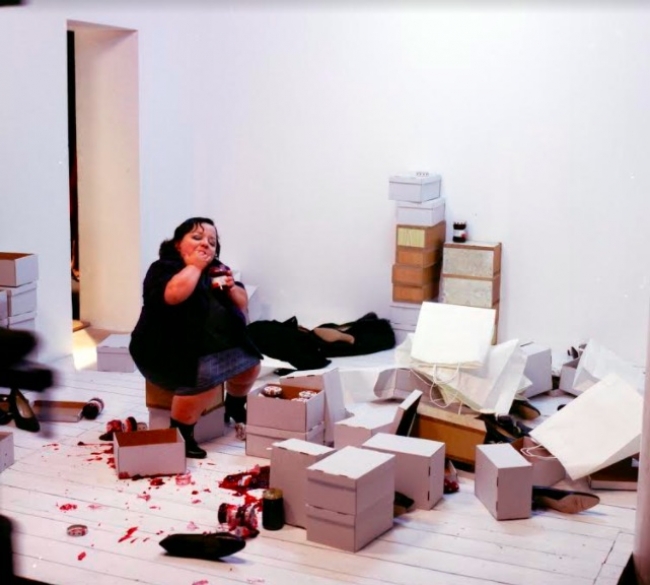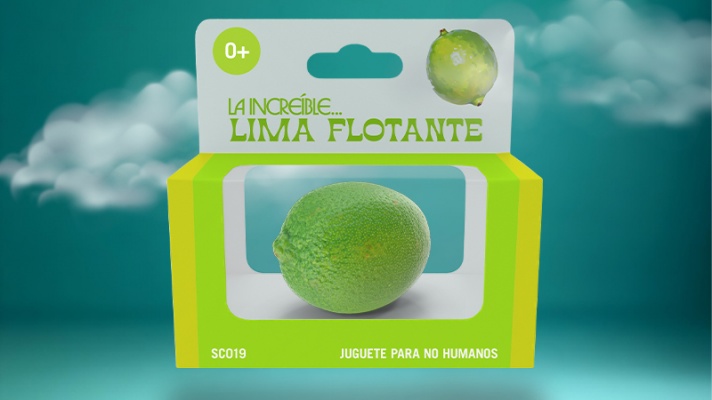Galerías y otras organizaciones que le representan
Organizaciones con obra
Profesionales con obra
Descripción del Artista
Jordi Colomer (Barcelona, 1962). Reside y trabaja entre Barcelona y París. Su obra abarca múltiples medios, con especial dedicación a la fotografía, el vídeo y la puesta en escena dentro del espacio expositivo.
Tras “Alta Comèdia” (Tinglado 2, Tarragona, 1993), en 1997 presenta "Simo", su primera obra de vídeo en una sala de proyección site-specific construida dentro del Museu d’Art Contemporani de Barcelona -MACBA. De este periodo surgen obras como “Pianito” (1999), “Les Jumelles” (2000) o “Le Dortoir” (2001), que completarán un periodo marcado por el trabajo en sets de rodaje.
A partir de 2001, la investigación escenográfica de Jordi Colomer se abre al espacio urbano: “Anarchitekton” (2002-2004), proyecto itinerante a través de Barcelona, Bucarest, Brasilia, Osaka; “No? Future!” (rodada en Le Havre, 2006 y reactivada en Manifesta X, St. Petersburgo, Rúsia, 2014), “Arabian Stars” (Yemen, 2005), “En la Pampa” (desierto de Atacama, Chile, 2008), “Avenida Ixtapaluca” (México, 2009) o “The Istanbul Map” (Istanbul, 2010), el tríptico “What will come” (Nueva York, 2010), “Medina-Parkour” (Tetuán, Marruecos, 2013) y “Sjobadet Alphabet” (Trondheim, Noruega, 2014).
Entre sus trabajos recientes destacan "X-Ville" (2015), “L'avenir” (2010), “Prohibido Cantar / No Singing” (2012), “La Soupe Americaine / The American Soup” o “The Svartlamon Parade” (Trondheim, Noruega, 2014).
Su obra ha sido expuesta, entre otros lugares, en el Museo Nacional Centro de Arte Reina Sofía de Madrid (2005), en el Jeu de Paume de París (2008), en el Bronx Museum of the Arts de Nueva York (2010), en el Argos Center for Art and Media de Bruselas (2011), en Matadero de Madrid (2012) o en el Centro de Arte Santa Mónica de Barcelona (2015).
Está presente en las colecciones de, entre otros, Museo Nacional Centro de Arte Reina Sofía, Fundació La Caixa de Barcelona, Museu d’Art Contemporani de Barcelona -MACBA, Instituto Valenciano de Arte Moderno –IVAM, Centre Pompidou de París o Bronx Museum of the Arts de Nueva York.
Bio (english)
Jordi Colomer was born in Barcelona in 1962. He presently lives and works between Barcelona and Paris. Enjoying a gifted and marked sculptural sense, his work spans many mediums, centring on photography, video and the staging of both in exhibition areas. Often the creation of situations -befitting a kind of "expanded theatre"- allows the spectator to assess his/her relationship with the productions and his/her role in and before these.
The variety of mediums called forth by Jordi Colomer's work and the transversality of his judgement undoubtedly are linked to his fragmentary education as architect, artist and art historian in progressive 1980s' Barcelona. Beginning with the "Alta Comèdia" (High Comedy) exhibition, (tinglado 2, Tarragona,1993), Colomer began to fuse his sculptural work, elements of theatre staging and architectural references. From those years on (in particular after he discovered the German avant-garde cinema of the thirties), video started to stand out as the main mediator in the relationship the artist had with performance art, theatre and sculpture. In 1997 he showed his first video work "Simo" at a site-specific projection room built inside the Barcelona Museum of Contemporary Art (MACBA). This strategy enabled Colomer to superimpose theatrical space, the installation as an inhabitable sculpture and cinematographic micro-narration. That was how he produced pieces such as Pianito (The Little Piano, 1999), Les Jumelles (The Twins, 2000) or Le Dortoir (The Dormitory, 2001), which would complete a period marked by work in extreme film set constructions, where the set entirely determines the characters' behaviour.
From 2001, Jordi Colomer's staging investigation extends to urban space and an exploration of the different scenes of social life (neighbourhoods, streets, rooftops…) and his reverse the desert. This phase of his work is determined by different urban sets he is seeking or rediscovering. This is what led to works such as Anarchitekton (2002-2004), a travelling project involving four cities (Barcelona, Bucharest, Brasilia, Osaka),
NoFuture (filmed in Le Havre, 2006, reenacted for Manifesta X, St. Petersbourg, Russia, 2014) or Arabian Stars
(Yemen, 2005), among many others. It is also behind his most recent works En la Pampa (In the Pampa, made in the Atacama desert, Chile, 2008), Avenida Ixtapaluca (houses for Mexico) (Mexico, 2009) or The Istanbul Map (Istanbul, 2010), the tryptich What will come (New York, 2010), Medina Parkour (Tetouan, Morocco, 2013) or Sjobadet Alphabet (Norway. 2014). These are journey-works where the issue of movement keeps coming back, and where the isolated actions of a character condenses reflection (but not without a degree of absurd humour) on the possibilities of poetic survival offered by the contemporary metropolis.
Some of the more recent work do research on the many facets of utopia or dystopia and its relationship with fiction and history; At L' avenir (2010), we follow a group of pioneers in a free interpretation of the Phalanstery project of Charles Fourier. Prohibido cantar / No Singing (2012 ) superimposes imaginary cities and unrealized projects . Here the founding of a city, evokes the failed mega - projects of casino-citiy in Spain ( as Gran Scala, Eurovegas ) and at same time the City of Mahagonny described by Bertoltd Brecht in the moment that Las Vegas began. La Soupe Americaine / The American Soup on the provisional postwar shelters (Normandy , 2013 ) or The Svartlamon Parade ( Trondheim , Norway, 2014 ) incorporate archive footage to place the present in a critical position.
Artistas similares

Entrevistas, 15 abr de 2020
Jordi Colomer: "Tendremos que inventar las nuevas catacumbas"
Por ARTEINFORMADO
"Desde luego esta nueva situación me cuestiona enormemente, y veremos en el futuro como perfilamos los espacios de lo social y cual es nuestro rol, más allá del entretenimiento".

Grandes Eventos, 20 jun de 2018
Sexteto de iberoamericanos en Manifesta 12 Palermo
Por GUSTAVO PéREZ DIEZ
La cubana Tania Bruguera, la brasileña Maria Thereza Alvez, el colombiano Alberto Baraya y los españoles Jordi Colomer, Cristina Lucas y Daniel Fernández Pascual.

Grandes Eventos, 05 sep de 2017
Artistas iberoamericanos en Venecia: un colectivo bien avalado
Por GUSTAVO PéREZ DIEZ
La mayoría son artistas consolidados, representados por galerías líderes e integrando las colecciones privadas, institucionales y públicas más importantes no solo de ámbito iberoamericano.

Exposición. 16 abr de 2025 - 11 may de 2025 / Centro Botín / Santander, Cantabria, España

Formación. 08 may de 2025 - 17 may de 2025 / Museo Nacional Centro de Arte Reina Sofía (MNCARS) / Madrid, España